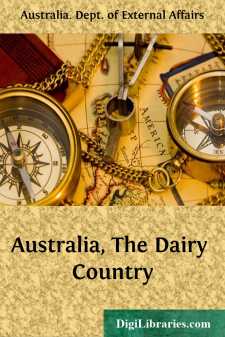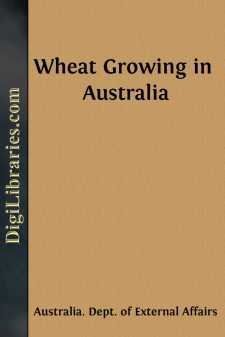Categories
- Antiques & Collectibles 13
- Architecture 36
- Art 48
- Bibles 22
- Biography & Autobiography 813
- Body, Mind & Spirit 142
- Business & Economics 28
- Children's Books 17
- Children's Fiction 14
- Computers 4
- Cooking 94
- Crafts & Hobbies 4
- Drama 346
- Education 46
- Family & Relationships 57
- Fiction 11829
- Games 19
- Gardening 17
- Health & Fitness 34
- History 1377
- House & Home 1
- Humor 147
- Juvenile Fiction 1873
- Juvenile Nonfiction 202
- Language Arts & Disciplines 88
- Law 16
- Literary Collections 686
- Literary Criticism 179
- Mathematics 13
- Medical 41
- Music 40
- Nature 179
- Non-Classifiable 1768
- Performing Arts 7
- Periodicals 1453
- Philosophy 64
- Photography 2
- Poetry 896
- Political Science 203
- Psychology 42
- Reference 154
- Religion 513
- Science 126
- Self-Help 84
- Social Science 81
- Sports & Recreation 34
- Study Aids 3
- Technology & Engineering 59
- Transportation 23
- Travel 463
- True Crime 29
Australia, The Dairy Country
Categories:
Description:
Excerpt
The suitability of Australia as a country for the dairyman is referred to in the report of the Scottish Agricultural Commission, who toured the States of the Commonwealth in 1910-11, in the following terms:—
An up-to-date Milking Yard."The practice of dairying, in a limited domestic sense, as applied to the milking of a few cows and the making of a little butter and cheese for family use, is as old as the history of mankind, and in that restricted meaning dairying has been carried on in Australia since the arrival of the first settlers. But the industry as existing there to-day is a vastly different matter, being already of great importance, and promising rapid and extensive development. It is a young industry, so recently out of its infancy that if this report had been written fifteen years ago the section on dairying might have been almost as brief as the famous chapter on snakes in Ireland.
Cream Carts at the Factory."The live stock brought to Sydney by Captain Phillip in 1788, and sent to propagate their kind at Farm Cove, consisted of one bull, four cows, one calf, and seven pigs. Their descendants in 1908 included about ten and a-half millions of cattle, of which nearly two millions were dairy cows. This is about one cow for every two persons in the Commonwealth, which seems a large proportion, but as it means only one cow for every two square miles in Australia, there is ample room for expansion. In Great Britain we have about twenty-six cows for every square mile, and only one cow for every fifteen people. These figures indicate that in proportion to its population Australia is much more of a dairying country than Great Britain, but that in proportion to its area, it has developed the industry much less extensively, and is still capable of making enormous growth. Until within comparatively recent years there was little dairying anywhere in the Commonwealth, and what little there was appears to have been carried on by somewhat primitive methods. Modern developments, the spread of scientific knowledge, the fostering care of Government, and, above everything, the advent of the separator, of the milking machine, and of the freezer have changed all that. To-day the industry is prospering and full of promise....
"There is no denying the fact that every State in the Commonwealth has extensive districts where dairying could be carried on very profitably. Indeed there must be very few parts of the world where Nature does so much to help and so little to hinder the provident and industrious producer of milk.
"The most important advantage of all is undoubtedly the climate, and that, like many another thing of value, is a good servant, but a bad master. It would not be easy to overstate the benefit a dairyman receives from being relieved of the need for housing, hand-feeding, and tending his cows during a long winter. His cows are healthier, their feeding costs less, there is no cleaning of byres, no washing of floors, no preparing of food, no never-ending carting of turnips, no filling of sheds with hay or straw. His anxiety, his work, and his expense are reduced by half, through the simple agency of a friendly climate. And yet this same climate is also his most dangerous enemy....



